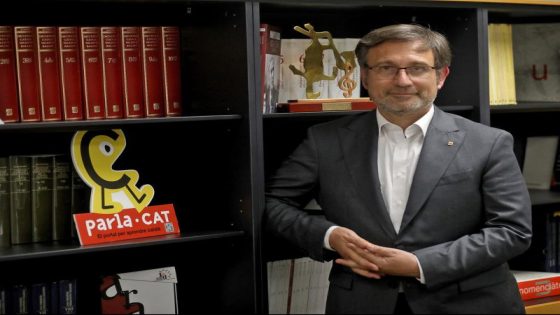On February 24, 2025, Francesc Xavier Vila, the Catalan Language Minister, announced concerning Trends in the latest linguistic survey. The data reveals that only 32.6% of Catalans now use Catalan as their primary language, a significant drop from 46% in 2003. Why is this decline happening, and what does it mean for the future of the Catalan language?
- Catalan use declining among Catalans.
- Immigration affects Catalan language habits.
- Increased interest in learning Catalan.
- Businesses play a role in language integration.
- Youth not the lowest Catalan speakers.
- Language immersion needs improvement in schools.
Understanding the Decline of Catalan: Key Factors Impacting Language Use
Why is the Catalan language losing ground? The recent survey indicates that demographic shifts, particularly immigration, play a crucial role. As the population grows, the percentage of those who speak Catalan as their primary language has decreased. This raises important questions about cultural integration and language preservation.
Key Insights on Catalan Language Usage and Its Future
The survey highlights several critical insights regarding the use of Catalan:
- Only 32.6% of the population uses Catalan as their primary language.
- Demographic changes have led to a rise in non-Catalan speakers.
- Despite increased knowledge of the language, its everyday use is declining.
- Efforts to promote Catalan in workplaces and education are essential for revitalization.
Demographic Changes: A Major Factor in Language Decline
Over the past two decades, Catalonia’s population has surged from 6 million to 8 million, primarily due to immigration. This influx has introduced many individuals who do not speak Catalan as their first language. Consequently, while the number of Catalan speakers remains stable, the overall percentage has dropped significantly. This shift emphasizes the need for effective language education and integration programs.
The Role of Education and Workplaces in Promoting Catalan
Educational institutions and workplaces are pivotal in fostering the use of Catalan. Schools must ensure that students receive adequate training in the language, while businesses should encourage employees to learn and use Catalan. By creating environments where Catalan is actively spoken, the language’s presence can be strengthened across various sectors.
Community Engagement: A Path to Revitalizing Catalan
Community initiatives that promote Catalan usage can significantly impact the language’s future. Local events, cultural programs, and social media campaigns can engage both native speakers and learners. By fostering a sense of community around the language, Catalonia can work towards reversing the decline and ensuring its cultural heritage remains vibrant.
In conclusion, the future of the Catalan language hinges on collective efforts from individuals, businesses, and the government. By prioritizing language education and creating supportive environments, Catalonia can revitalize Catalan and ensure its continued relevance in a changing demographic landscape.

































